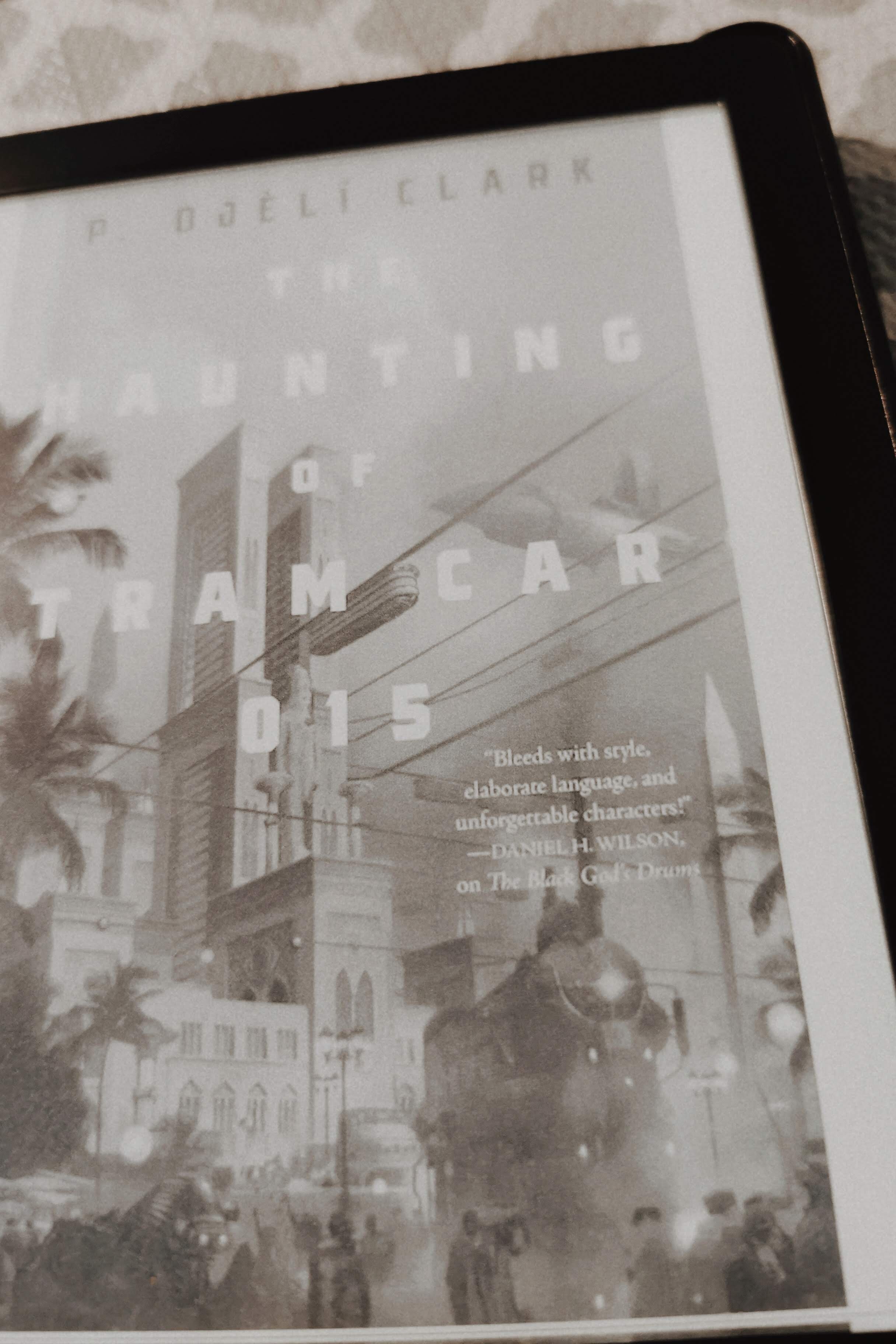The Haunting of Tram Car 015 by P. Djèlí Clark
Returning to the world of Cairo, Egypt in which humans and djinn live together (which comes with its own set of difficulties) was definitely a fun and pleasant ride. I had read Clark’s full novel A Master of Djinn earlier this year before I had figured out that Clark also had novellas set in the same world (to be exact, there are three of them) and that is why Clark had essentially published his full novel: because fans had become so immersed in this layered world that he managed to give us just a slight taste of in the novellas that they had wanted more.
There is no doubt that Clark is an incredibly talented author. Being a history university professor, it is incredibly clear that not only does he have the knowledge for this world that he has created, with the djinn and all, but he also has an incredible talent, a gift even, for creating an incredibly layered world that is both fantastical and very, very real.
As a Classical Studies major at university and an overall history enthusiast, I am incredibly picky over what historical fiction books I pick up. I stay incredibly far away from WWII Eurocentric novels because to me, there’s only so much you can make up for that period of time (I do not, however, ignore its influences and the complications it created before, during and after for the whole world) but to some point, it does get a bit tedious and a bit boring (again, that is my personal opinion. One of my favourite WWII books is the Tattooist of Auschwitz but that is about how far I’ll go). I always try to find historical fiction that relates to historical periods of which I do not know a lot about. I tend to gravitate towards East Asian historical fiction (These Violent Delights, The Library of Legends) and also of course, modern novels about ancient Greece or Rome (The Silence of the Girls).
I do not know, unfortunately, much about 1912 Cairo but it is clear to me that there was tension between the local population and of course the Western Europeans as well as tension amongst the locals themselves. That being said, I do know a majority of the world-building simply because I had read the novel first (which was utterly fantastic and I want to re-read it again) but the novella does provide a vast amount of information such as the inner doings of the Ministry and of course, gives references to the cases in the other novellas.
The part I liked the most from this novella, which is also shown in the full-length novel, is that it is clear how much research went into really creating the society, especially the magical djinn habitants. There are a variety of djinns, mainly connected to the elements.
Simply put, without spoiling too much: I learned something about Tajik folklore that I never knew before (surprisingly, my mom didn’t know about it either which is rare). The thing that definitely appealed to me the most, as it did in the book, is essentially world-building. I have an incredibly weak spot for good world-building, one that excites you and can also terrify you.
Overall an incredible and fantastic short read and I definitely see why fans wanted a full-length novel. The hype is very much deserved!


